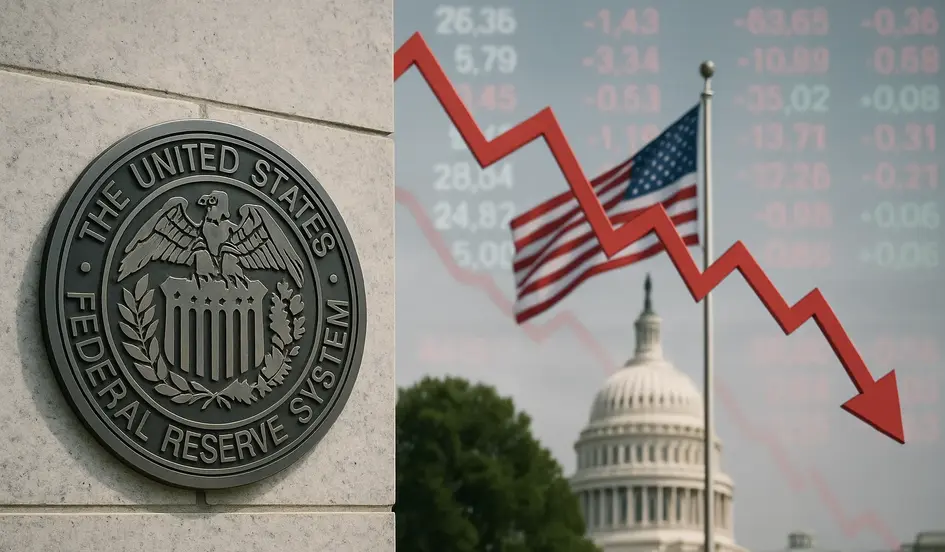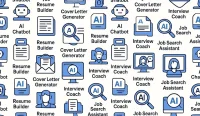Wall Street’s unease about the strength of the U.S. economy intensified after a disappointing July jobs report showed slower hiring and significant downward revisions to earlier months’ employment figures. The news came as President Donald Trump unveiled a fresh wave of tariffs on imported goods, raising fears that businesses already under strain could face even more pressure.
The Labor Department reported that U.S. employers added just 73,000 jobs in July, far below economists’ expectations. At the same time, May and June job growth was revised down by a combined 258,000, wiping away much of the momentum previously thought to be buoying the labor market.
The weaker-than-expected data immediately rattled investors. The Dow Jones Industrial Average dropped more than 400 points on the day of the release, erasing gains from earlier in the week.
“This is a flashing yellow light for the economy,” said one Wall Street analyst. “It doesn’t mean we’re in a recession tomorrow, but it does mean the risks are rising.”
A Job Market Showing Cracks
For recent graduates like Michael Maluso, 22, the slowdown is personal. Despite earning a degree in mechanical engineering from the University of Connecticut, Maluso has been unable to land a job in his field. Instead, he’s back in his hometown, working at a local pool while sending out résumés.
“I’m kind of past the state of being discouraged,” Maluso said. “It’s obviously not a me issue. It’s definitely just the fact that people aren’t hiring.”
The July report highlights just how uneven the labor market has become. While healthcare and hospitality continue to expand, government employment fell sharply, with more than 1,300 layoffs at the State Department alone. Meanwhile, the tech sector—long a driver of U.S. job growth—has pulled back, with major companies freezing or reducing hiring amid global uncertainty.
Economists warn that while 73,000 jobs in a month is not catastrophic, it is well below the 150,000–200,000 monthly average typically needed to keep up with population growth and maintain a stable unemployment rate.
Be the Employer Who Stands Out
While graduates and professionals face fewer opportunities, your company can attract top talent by acting now. Post your job on WhatJobs and connect with candidates ready to contribute.
Post a Job Now →Tariffs Begin to Bite
Compounding the employment concerns are Trump’s escalating tariffs on imported goods. The administration announced new duties of up to 25% on a wide range of products from countries including China, Vietnam, and India.
For small business owners like Martin O’Brien, who runs the pet gear company Bayog, the impact is immediate and painful.
“We now have a 25% tariff on this product,” O’Brien explained, holding up one of his company’s best-selling items. “The only way for us to survive as a business is to raise prices and probably cut expenses, which means firing people.”
Bayog manufactures in Asia and sells through thousands of U.S. retailers. O’Brien says tariffs create a squeeze: higher costs that can’t always be passed to customers and narrower margins that force layoffs.
“Tariffs are going to hit small businesses first, and they’re going to hit small businesses hardest,” he warned. “They could put a lot of us out of business.”
Economists agree. While tariffs are often billed as a way to pressure foreign governments, the costs are largely shouldered by American companies and, eventually, consumers. The import price index—which tracks what U.S. buyers pay for foreign goods—has not fallen, indicating that foreign exporters aren’t lowering their prices to offset tariffs.
Instead, U.S. firms must write checks at customs, either absorbing the costs or passing them on through higher consumer prices.
A Political Firestorm at the BLS
The weak report sparked not only economic fears but also political controversy. Within hours of the data release, Trump ordered the firing of the Commissioner of Labor Statistics (BLS), the agency responsible for compiling jobs data.
The decision drew swift criticism from economists, lawmakers, and policy experts, many of whom warned that tampering with a traditionally independent statistical agency could undermine trust in government data.
“For decades, the Bureau of Labor Statistics has been regarded as the gold standard for economic reporting,” said one former BLS official. “Firing its top official for reporting unfavorable numbers sets a dangerous precedent.”
Trump, however, has long bristled at reports that clash with his narrative of economic success. Allies argued that the BLS data was unreliable and needed reform. Critics countered that removing its commissioner after a weak jobs report risks politicizing the very data businesses, investors, and policymakers rely upon.
Historical Echoes
The episode echoes previous tensions between presidents and economic data. In the 1970s, President Richard Nixon privately pressured officials to report more favorable unemployment figures, though the pressure never resulted in firings. More recently, Trump himself has both praised and derided BLS reports depending on whether they aligned with his message.
“Markets rely on trust,” said Justin Wolfers, an economist at the University of Michigan. “If businesses and investors think the numbers are manipulated for political reasons, that trust breaks down. And once it’s gone, it’s very hard to rebuild.”
What It Means for Workers
The convergence of slower hiring, tariff-driven uncertainty, and political meddling creates a challenging environment for American workers.
- Young graduates like Maluso face a shrinking pool of entry-level openings.
- Small businesses are squeezed between rising costs and reluctant consumers.
- Federal workers are already seeing layoffs, with more possible if budget constraints tighten.
At the same time, economists note that the overall unemployment rate remains relatively low, and certain industries—healthcare, leisure, and hospitality—continue to grow. That divergence may widen as tariffs more heavily affect manufacturing and trade-related jobs.
Looking Ahead
The next several months will be critical. Tariffs often take time to fully ripple through supply chains, meaning their impact on jobs may only become clear by the fall. The Federal Reserve, meanwhile, faces increasing pressure from Trump to cut interest rates in response to the slowdown.
“The tariffs will take time to move through the economy,” said CBS News correspondent Nick Zettovich. “It could take months before we see the full impact on jobs.”
For now, businesses and workers alike are left in limbo—uncertain whether the July report represents a temporary “soft patch” or the start of a more serious downturn.
FAQ: Jobs, Tariffs, and the Economy
1. How many jobs were added in July?
Only 73,000, far below expectations. Revisions also showed May and June growth was weaker than initially thought.
2. Which sectors are most affected?
Government employment fell by more than 1,300 jobs at the State Department. Tech companies are scaling back, while healthcare and hospitality continue to add positions.
3. How do tariffs affect employment?
Tariffs function like a tax on imports. U.S. businesses pay them upfront at customs. To cope, companies may raise prices, cut jobs, or both—hurting consumers and workers.
4. Why did Trump fire the BLS commissioner?
The president removed the BLS chief after the weak report, sparking criticism that the move undermines the agency’s independence and threatens the credibility of economic data.
5. Is the U.S. heading toward a recession?
Economists are cautious. While job growth is slowing, unemployment remains relatively low. The risk of recession has increased but is not yet a consensus forecast.




